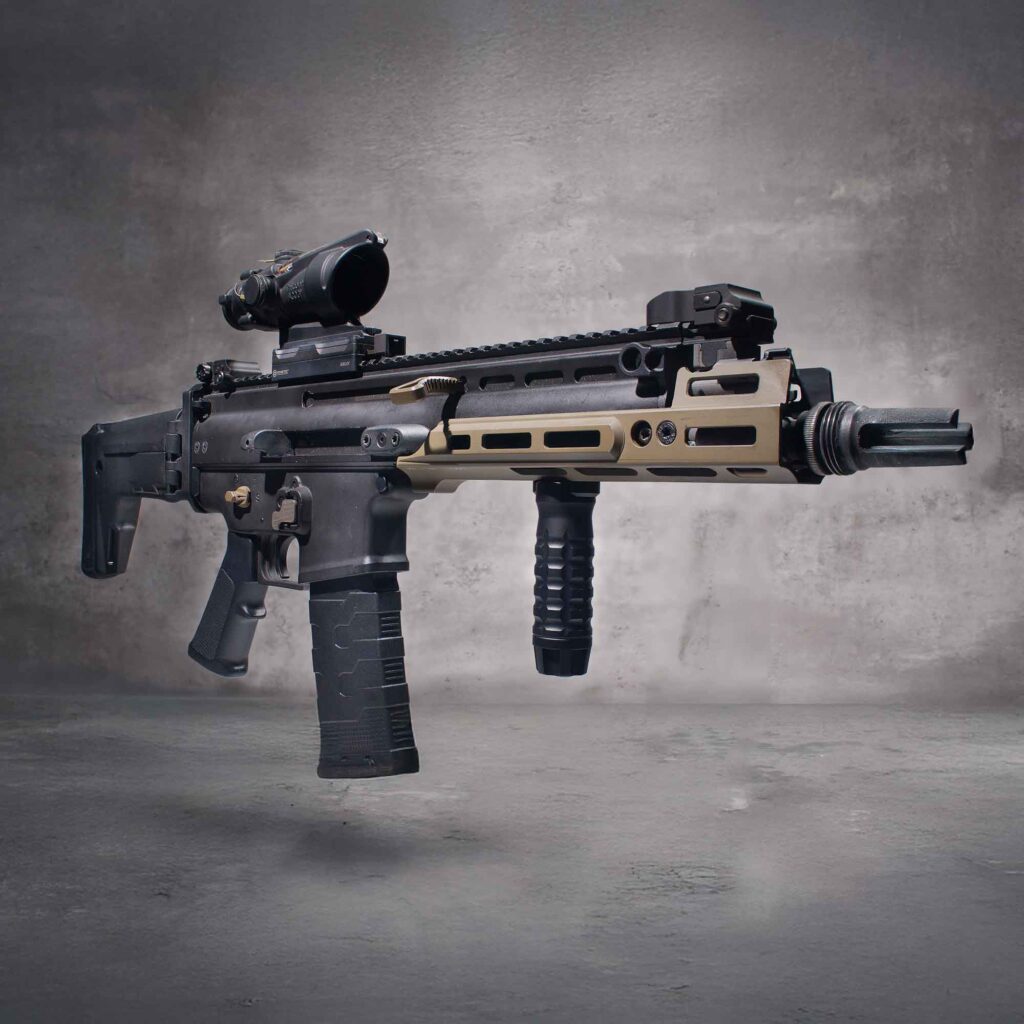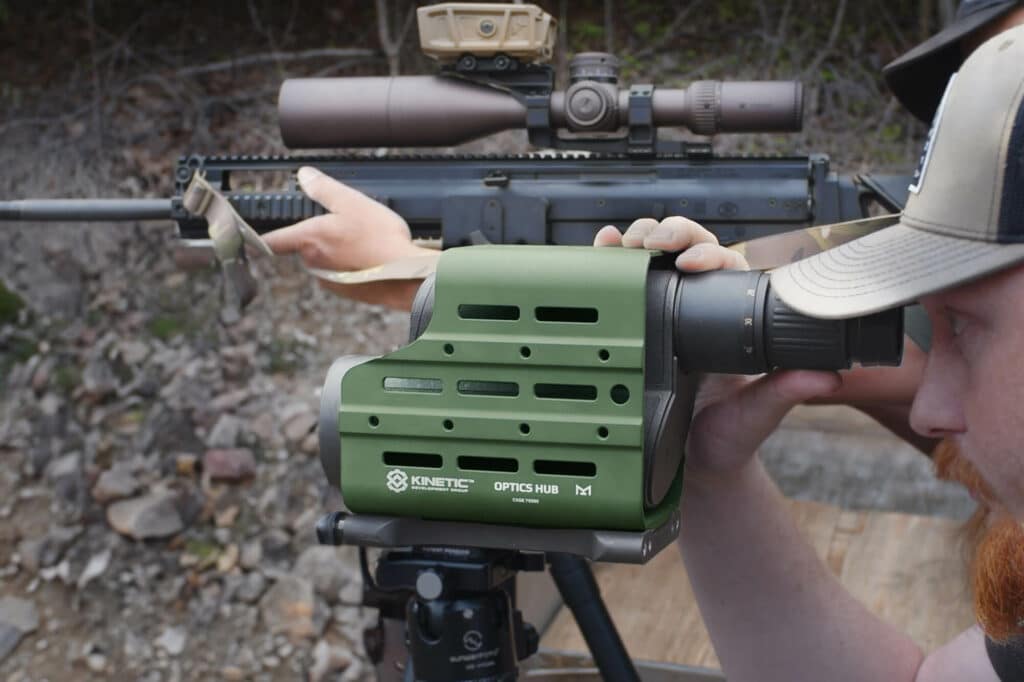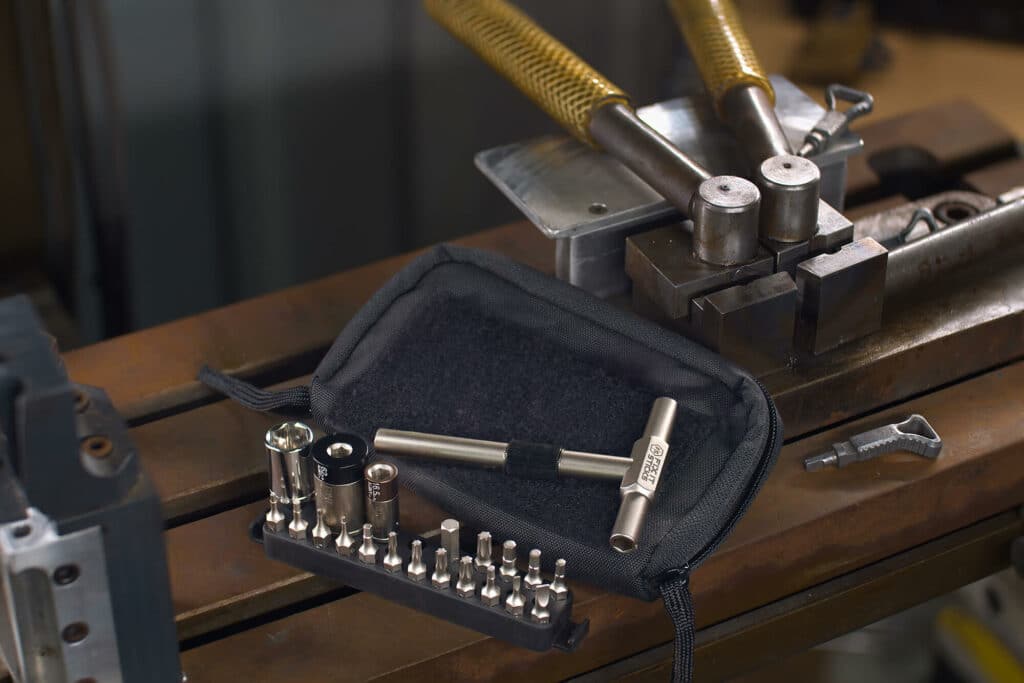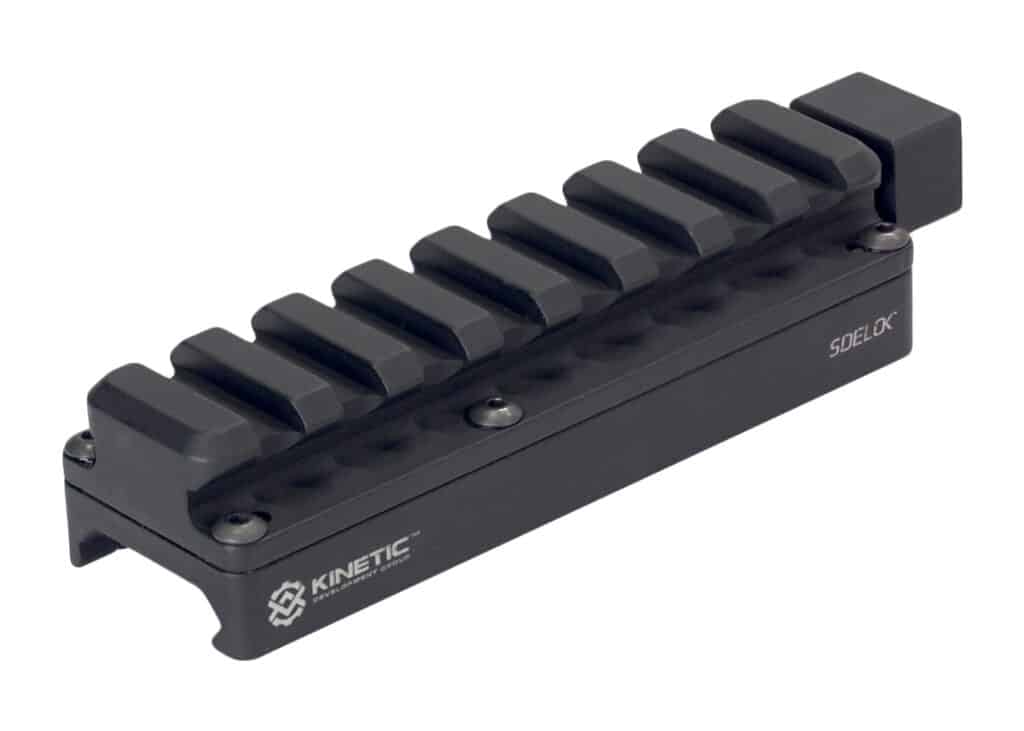Whether your rifle is set up for home defense or military/law enforcement purposes, fast target acquisition in tight spaces is a necessity. Once you have selected your optic you may need to decide on a mount. As with the optic itself, there is no shortage of options that all come with their pros and cons. This post is going to provide a brief overview of different riser heights to help gain perspective on what type of mount is right for you.
First, let’s address what “co-witness” is. Co-witness can be simplified to how your optic interacts with your backup iron sights. Two common styles are “absolute” and “lower one-third”. Absolute co-witness is achieved when your electronic reticle is perfectly in line with your iron sights. If your optic comes with a mount, the factory packaging potentially says “absolute co-witness”. This means that the dot is intended to be zeroed in conjunction with your iron sights. With folding iron sights this is a solid option. It allows you to get down on the gun, maintaining that point of contact with your cheek sitting firmly on the stock. Things start to get complicated when you add fixed iron sights to the mix. Picturing your classic M16 style fixed front sight as the example, it will start getting crowded within that little glass window. This can play a factor when it comes to target identification while placing that dot on target – especially as you start trying to reach out to farther distances.
In some cases, if your optic comes with a factory mount, it will include additional plates. These are meant to be sandwiched between the mounting face and the base of your optic. This will add height to push your optic into a lower one-third or even higher co-witness. If you apply this plate, your irons will now sit in the lower one-third portion of the glass, with the dot sitting just above them in your sight picture. This will remove some of the clutter while still allowing you to utilize both fixed and folded irons should your electronic optic fail you. Despite sitting slightly higher, you will still be able to maintain a solid cheek-weld on the stock.
Riser Heights

Lower One-Third Absolute
Outside of the two previously mentioned riser heights, there are options for even taller setups as well as low-profile. These should be considered more purpose-driven and firearm-specific. Stepping away from our AR style weapon examples, other firearms have different receiver and stock height differentials. If your firearm of choice has a stock that sits on the lower side, having an optic on a taller riser may cause issues where you can not achieve a solid cheek-weld. This removes a point of contact that can impact your performance overall. A stock that sits comparatively lower versus the receiver may call for a low-profile mount, or absolute co-witness at highest.
Going the other way, you may need to look into one of the taller risers on the market if you want people to believe you can afford NODs if you utilize gas masks or night vision as part of your equipment. Trying to get sight alignment with these tools in a comfortable and effective manner on a standard mount can be difficult in most cases. You are going to have to slightly adjust how you manipulate the gun, but that all comes with proper training and a thorough understanding of your gear’s purpose.
Ultimately, your choice in optic height comes down to personal preference. What works for me may not work for you. Understanding your firearm, your equipment, its purpose, and how you train will dictate what your best option is. While this post is directed more toward entry-level users, I hope it was able to clearly outline why you see a wide variety of mounting options, as well as what you may want to consider for your own applications. We love to share thoughts on things like this and want to do more. Is there something else you would like us to cover? Maybe another topic we could provide useful information? As with all other posts, feel free to reach out to us and let us know what you think.
– H
You can always reach us here at: info@kineticdg.com

























